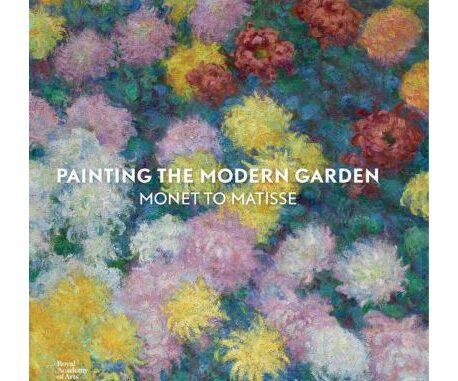
“I perhaps owe it to flowers that I became a painter.” (Claude Monet).
The Royal Academy of Arts presents Painting the Modern Garden, Monet to Matisse. This blockbuster exhibition examines how Claude Monet and his contemporaries depicted gardens. The works, which come from all over the world, span the 1860s to the 1920s and explore the scientific, artistic and social changes, including those bought about by WW1.
Vincent van Gogh, Pierre Bonnard, Mary Cassatt and Auguste Renoir are just a few who tackle the subject of the garden. Monet had a real love of horticulture but more artists became increasingly inspired as the interest in gardening rose with the affluent middle classes. The wealthy bourgeoisie had more leisure time and with rapid industrialisation came the need for tranquil respite. However, industrialisation brought more forms of transportation which allowed the importation of new plant species and the ability to now create exciting and unusual hybrids. The invention of the camera also steered artists to think in new ways about how to view and capture the world. All of these rapid changes led the artists in fresh directions.
Edouard Manet’s Young Woman Among Flowers, 1879 is, in my opinion, one of the most beautiful paintings in this exhibition. A blurred female figure in a delicate, white wispily painted dress and a contrasting black sun hat pauses to admire the wild flowers. She is completely engulfed in flora and fauna and a small girl stands a little way behind her who too seems to be quietly engaged with the flowers. Behind the figures there’s the blurred greenish yellow of trees, bushes and grass while in front daubs and dashes of colour among the meadow grass. Manet captures the essence of escapism.
As you move around the exhibition (which is less serene due to the masses) you approach what the majority of visitors have come to experience: Monet’s early years at Giverny with his wonderful water lilies and Japanese inspired bridges – a real crowd pleaser. There is documentation proving Monet’s passion for horticulture, including plant delivery slips, fascinating photos of Monet posing and painting in his garden and a collection of Japanese prints which once inspired Monet.
The Avant-Gardens room shows how artists developed techniques, not just to depict gardens but to provide the viewer with something more – an experience. Van Gogh’s use of strong colours, bold textures and manic marks create intensity. Wassily Kandinski produces almost complete abstraction in Murnau The Garden II, 1910. The cardboard (no canvas here) is two thirds covered in vibrant red, yellow and green oval marks which can be deciphered as flowers. In the distance on a steep slope are some houses on a hill. Everything is backed by the coldness of deep and pale blues and highlights of white.
Other works depict artists in their gardens, families at leisure which includes the introduction of garden furniture and ornamentation but we finish with Monet’s epic Agapanthus Triptych 1916 – 1919. In the last decade of his life he began working on a vast scale, and these three pieces haven’t been seen together outside of the USA since it left his studio. The water lily triptych was separated and sold to three different museums but has come together at the RA which delivers a swaddling blanket of Monet’s passion for painting and his garden in the final room. Less pictorial than his early works and on a grander scale, here you can see where the future of art was heading and how he opened the door for Pollock and Rothko.
“‘The subject is secondary,’ he said. ‘What I want to reproduce is that which is between the subject and me.’” (Monet. RA Gallery Guide).
This show is a lot to take in. You might originally have thought it will be rooms with some aesthetically pleasing garden paintings (and you would be correct) but this exhibition has used a thematic approach to delve into why the artists were painting and how they created their works. This is such a fantastic (but busy) show and is leading us into the RA’s autumn Abstract Expressionism exhibition which will take on the re-evaluation of this movement.
Painting the Modern Garden, Monet to Matisse, Royal Academy of Arts, Burlington House, Piccadilly, London W1J 0BD
Normal ticket price is £16
30th January – 20th April 2016
For more information please visit www.royalacademy.org.uk
By Helen Shewry

Leave a Reply